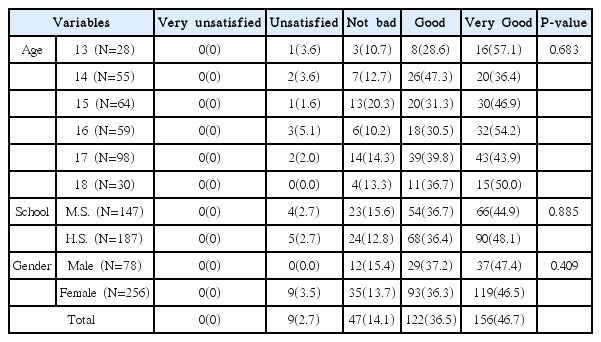A Study for effectiveness of School Doctor Program in Korean Medicine
Article information
Abstract
Objectives
Health in adolescent is very important in the whole life. But, students in Korea are very busy and hard to care about their health. This study is aimed to effectiveness and safety of effectiveness of School Doctor program in Korean Medicine.
Method
From august to december, 2015, Korean medicine association in Sungnam city conducted school doctor program for 12 middle and 8 high school. School doctor visitied 8 times and treat, lecture and consulting for students and teachers. The number of students participating in health lecture is 1,905. The number of students participating in the school project was 147 students in junior high school and 187 students in high school, totaling 334 students.
Results
The overall satisfaction rate of students was very high (83.2%) for school doctor program in Korean medicine. 92.8% of respondents answered that they should continue to school doctor program in Korean medicine.
Conclusions
We find that Korean medicine is suitable for the school doctor program. But this study have some limitations. Large-scale prospective study will be needed.










